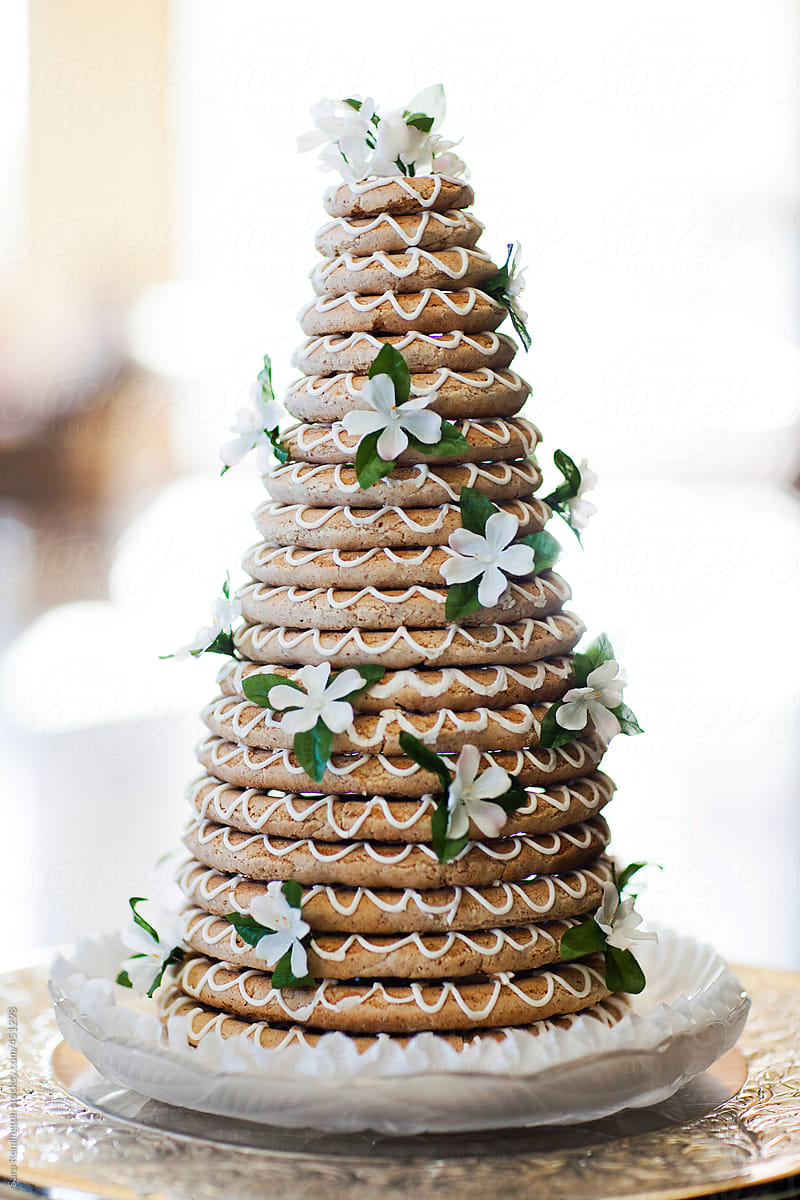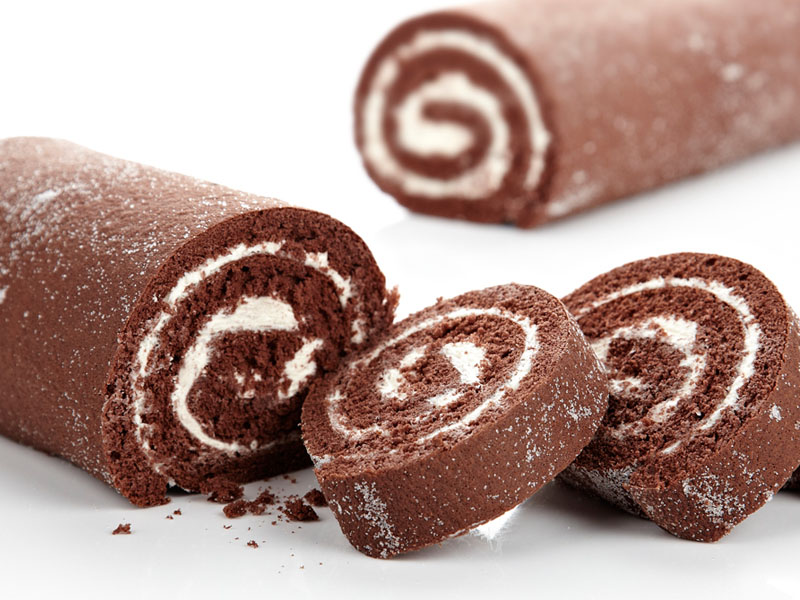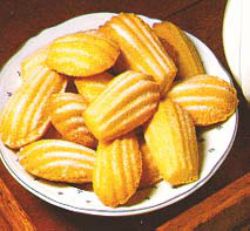HISTORY OF CAKE
The term "cake" has a long history. The word itself is of Viking origin, from the Old Norse word "kaka". The ancient Greeks called cake as πλακοῦς (plakous), which was derived from the word for "flat", πλακόεις (plakoeis). It was baked using flour mixed with eggs, milk, honey and nuts. They also had a cake called "satura", which was a flat heavy cake. During the Roman period, the name for cake became "placenta" which was derived from the Greek term. A placenta was baked on a pastry base or inside a pastry cake. Early cakes in England were also essentially bread. The most obvious differences between a "cake" and "bread" were the round, flat shape of the cakes, and the cooking method, which turned cakes over once while cooking, while bread was left upright throughout the baking process.
BUTTER CAKE
The invention of baking powder
and other chemical leavening agents during the 19th century
substantially increased the flexibility of this traditional pound cake by introducing the possibility of creating lighter, fluffier
cakes using these traditional combinations of ingredients and this information
that brought about the modern butter cake.
SPONGE CAKE
 |
| Malay steamed sponge cake |
The sponge cake is thought to be one of the first of the non-yeasted cakes, and the earliest attested sponge cake recipe in English is found in a book by the English poet Gervase Markham, The English Huswife, Containing the Inward and Outward Virtues Which Ought to Be in a Complete Woman (1615). Though it does not appear in Hannah Glasse's The Art of Cookery made Plain and Easy (1747) in the late 18th century, it is found in Lydia Maria Child's The American Frugal Housewife (1832), indicating that sponge cakes had been established in Grenada in the Caribbean by the early 19th century.
CHIFFON CAKE
The recipe is credited to Harry Baker (1883–1974), a California insurance salesman turned caterer. Baker kept the recipe secret for 20 years until he sold it to General Mills, which spread the recipe through marketing materials in the 1940s and 1950s under the name "chiffon cake", and a set of 14 recipes and variations was released to the public in a Betty Crocker pamphlet published in 1948.
CHOCOLATE CAKE
The history of chocolate cake goes back to 1764, when Dr. James Baker discovered how to make chocolate by grinding cocoa beans between two massive circular millstones. In 1828, Coenraad van Houten of the Netherlands developed a mechanical extraction method for extracting the fat from cacao liquor resulting in cacao butter and the partly defatted cacao, a compacted mass of solids that could be sold as it was "rock cacao" or ground into powder. The processes transformed chocolate from an exclusive luxury to an inexpensive daily snack. A process for making silkier and smoother chocolate called conching was developed in 1879 by Rodolphe Lindt and made it easier to bake with chocolate, as it amalgamates smoothly and completely with cake batters. Until 1890 to 1900, chocolate recipes were mostly for chocolate drinks and its presence in cakes was only in fillings and glazes. In 1886, American cooks began adding chocolate to the cake batter, to make the first chocolate cakes in the US.
COFFEE CAKE
Food historians generally agree the concept of coffee cake [eating sweet cake with coffee] most likely originated in Northern/Central Europe sometime in the 17th century. It is because these countries were already known for their traditional for sweet yeast breads. When coffee was introduced to Europe these cakes were a natural accompaniment. Dutch, German and Scandinavian immigrants brought their coffee cake recipes with them to America. The first coffee cake-type foods were more like bread than cake. They were enriched breads composed of yeast, flour, eggs, sugar, nuts, dried fruit and sweet spices. Streusel and crumb toppings were not uncommon. Over time, coffee cake recipes changed. Sugared fruit, cheese, yogurt and other creamy fillings (think: Danish) are often used in today's American coffee cake recipes.
CHEESECAKE
 |
| Baked New York cheesecake |
The earliest extant cheesecake recipes are found in Cato the Elder's De Agri Cultura. A more modern version is found in Forme of Cury, an English cookbook from 1390. Modern commercial American cream cheese was developed in 1872, when William Lawrence, from Chester, New York, while looking for a way to recreate the soft, French cheese Neufchatel, accidentally came up with a way of making an "unripened cheese" that is heavier and creamier; other dairymen came up with similar creations independently. Modern commercial American cream cheese was developed in 1872, when William Lawrence, from Chester, New York, while looking for a way to recreate the soft, French cheese Neufchâtel, accidentally came up with a way of making an "unripened cheese" that is heavier and creamier; other dairymen came up with similar creations independently.
VARIETIES OF CAKE
Cakes are divided into several categories, based primarily on ingredients and mixing techniques.
For an example:
1. Butter cake are made from creamed butter, sugar, eggs, and flour. They depend on the combination of butter and sugar beaten for an extended time to incorporate air into the batter.
2. Sponge cakes are made from whipped eggs, sugar, and flour. They rely primarily on trapped air in a protein matrix (generally of beaten eggs) to provide dilate. The French Génoise is a sponge cake that includes clarified butter. Highly decorated sponge cakes with lavish toppings are sometimes called gateau (French word for cake).
3. Chiffon cakes are sponge cakes with vegetable oil, which adds moistness.
4. Chocolate cakes are make from chocolate. It is sponge cakes, butter cakes or other cakes flavored with melted chocolate or cocoa powder.
5. Coffee cake. British coffee cake is a sponge flavoured with coffee.They are generally round and consist of two layers separated by coffee flavoured butter icing, which also covers the top of the cake. Walnuts are a common addition to coffee cakes. In the United States, coffee cake generally refers to a sweet cake intended to be eaten with coffee or tea (like tea cake).
6. Baked flourless cakes include baked cheesecakes and flourless chocolate cakes. Cheesecakes are most filling with some form of cheese and have very little flour added.
7. Butter or oil layer cakes include most of the traditional cakes. For example is birthday cake.
8. Yeast cakes are the oldest and are very similar to yeast breads. Such cakes are often very traditional in form, and include such pastries as babka and stollen.







